Analyzing Market Failures: Air Pollution and Government Policies
VerifiedAdded on 2021/06/15
|5
|778
|53
Homework Assignment
AI Summary
This assignment delves into the economic concept of market failures, using air pollution as a real-world example. It begins by defining market failures and their significance in economics, emphasizing the need for social intervention to correct market inefficiencies. The assignment then focuses on air pollution, explaining its detrimental effects on the environment and human health, and identifying it as a source of market failure due to negative externalities not reflected in market prices. The document explores various causes of air pollution, differentiating between primary and secondary sources, including fossil fuel combustion, agricultural activities, industrial emissions, and consumption of harmful substances. It then examines government policies designed to address air pollution, such as regulations and tax measures. The assignment illustrates how regulations, like the Clean Air Act, can reduce pollution by restricting emissions, and how taxes can increase the price of goods like cigarettes, thereby decreasing demand and internalizing the external costs of pollution. The conclusion reiterates the real-world problem of air pollution and the role of government policies in mitigating its negative effects. The student concludes that a combination of taxes and regulations can effectively reduce air pollution.
1 out of 5
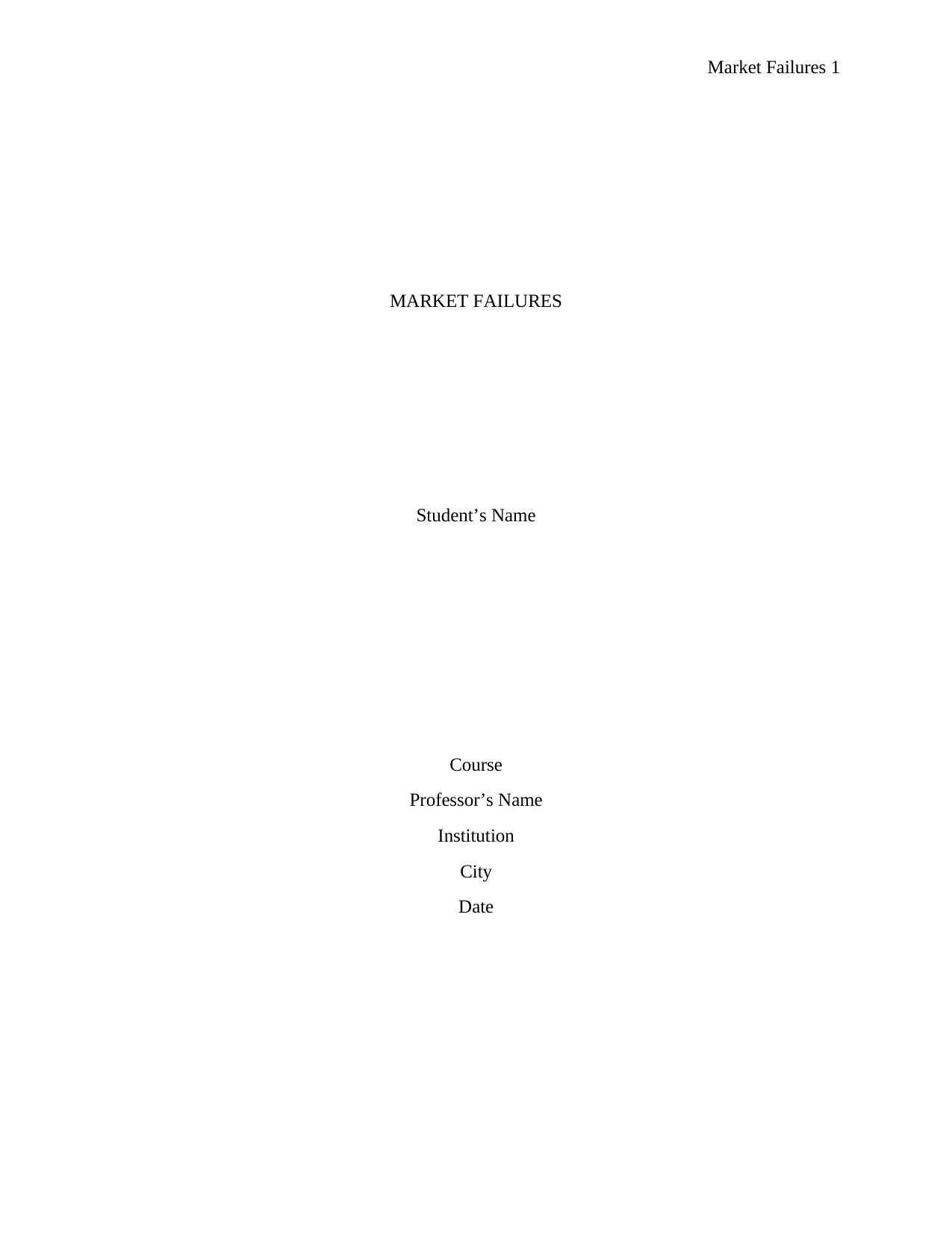
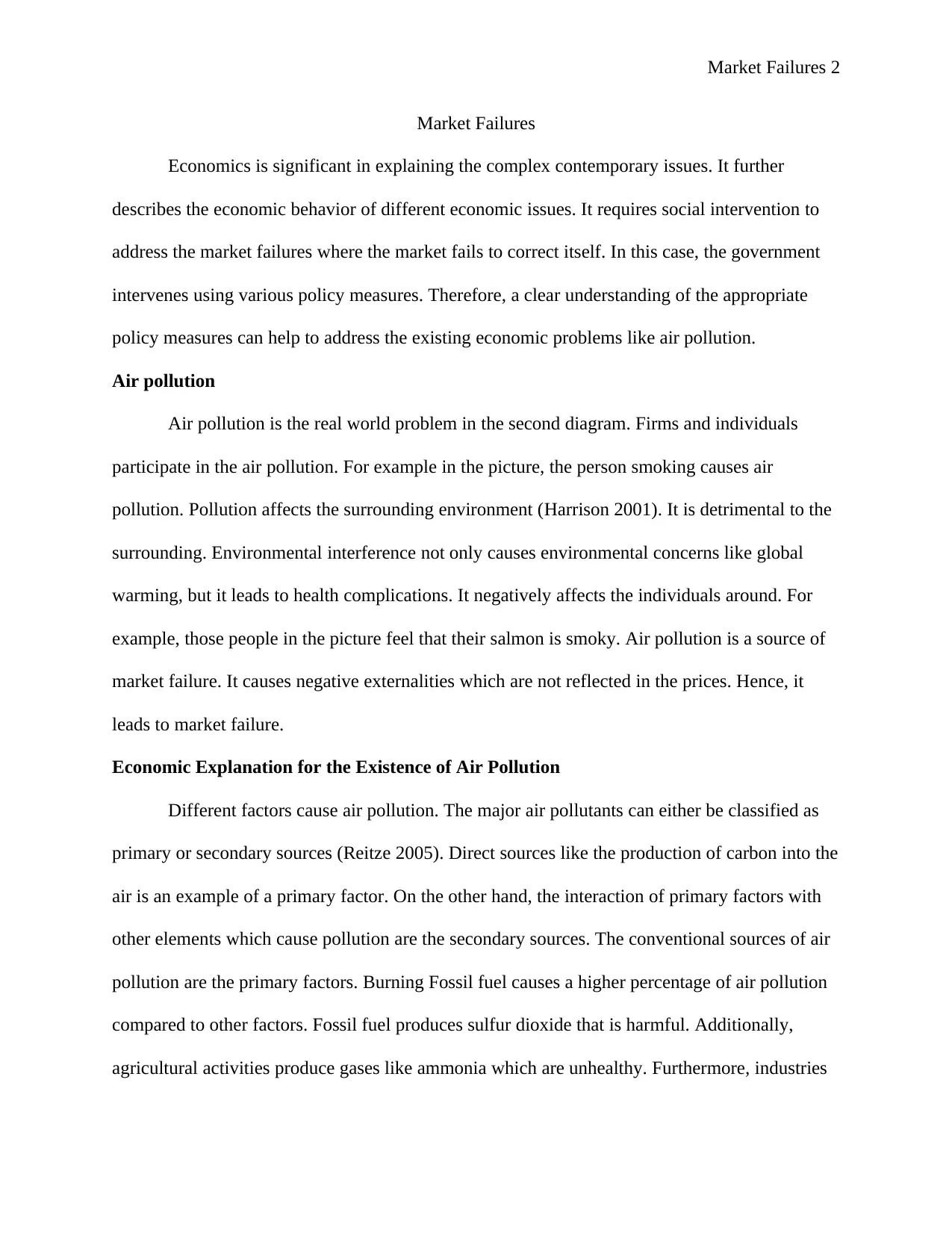
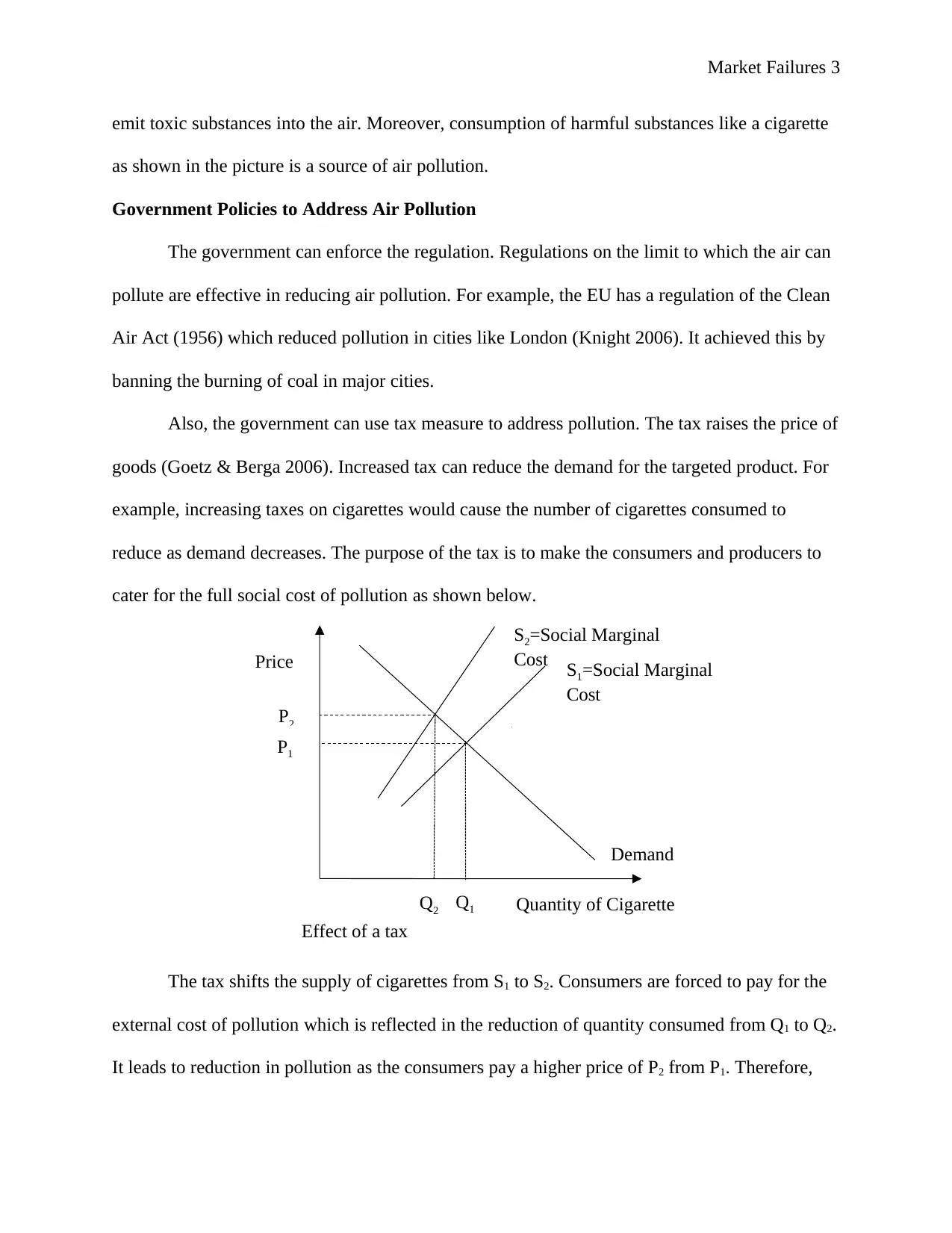

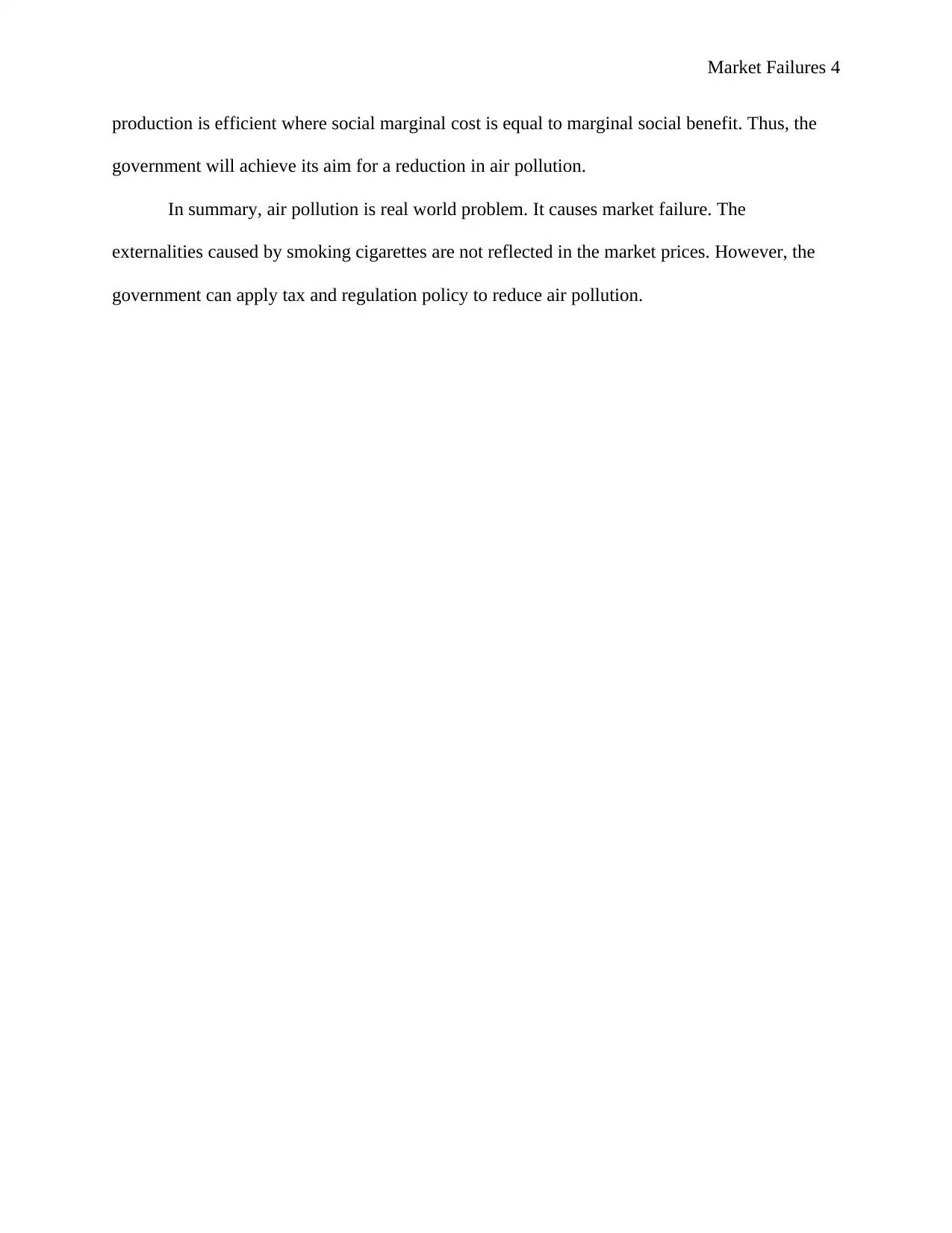
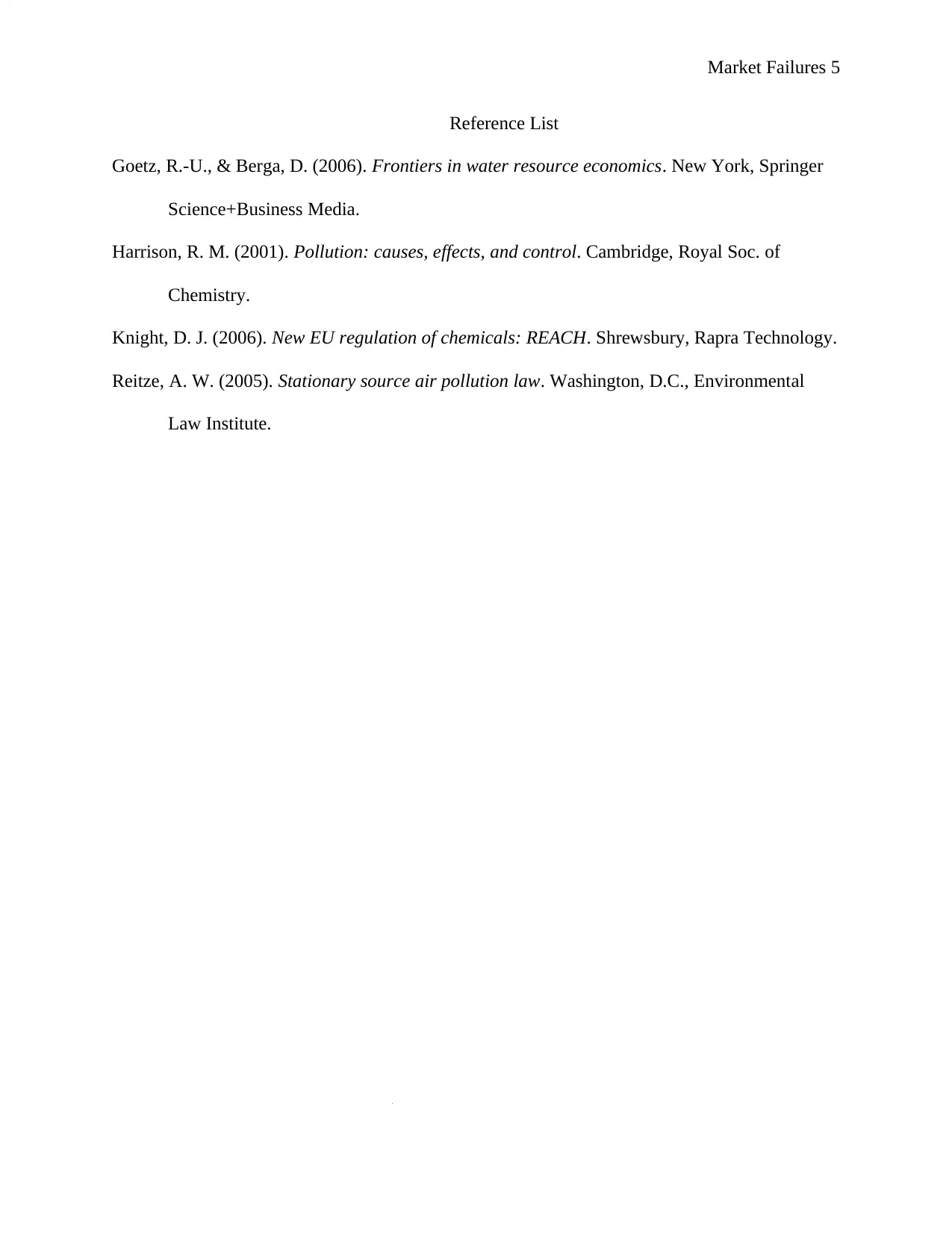



![[Year] ABC Company: Market Failure and Environment in Economic Context](/_next/image/?url=https%3A%2F%2Fdesklib.com%2Fmedia%2Fimages%2F658e5453c376427285461096c079d2b6.jpg&w=256&q=75)


![[object Object]](/_next/static/media/star-bottom.7253800d.svg)